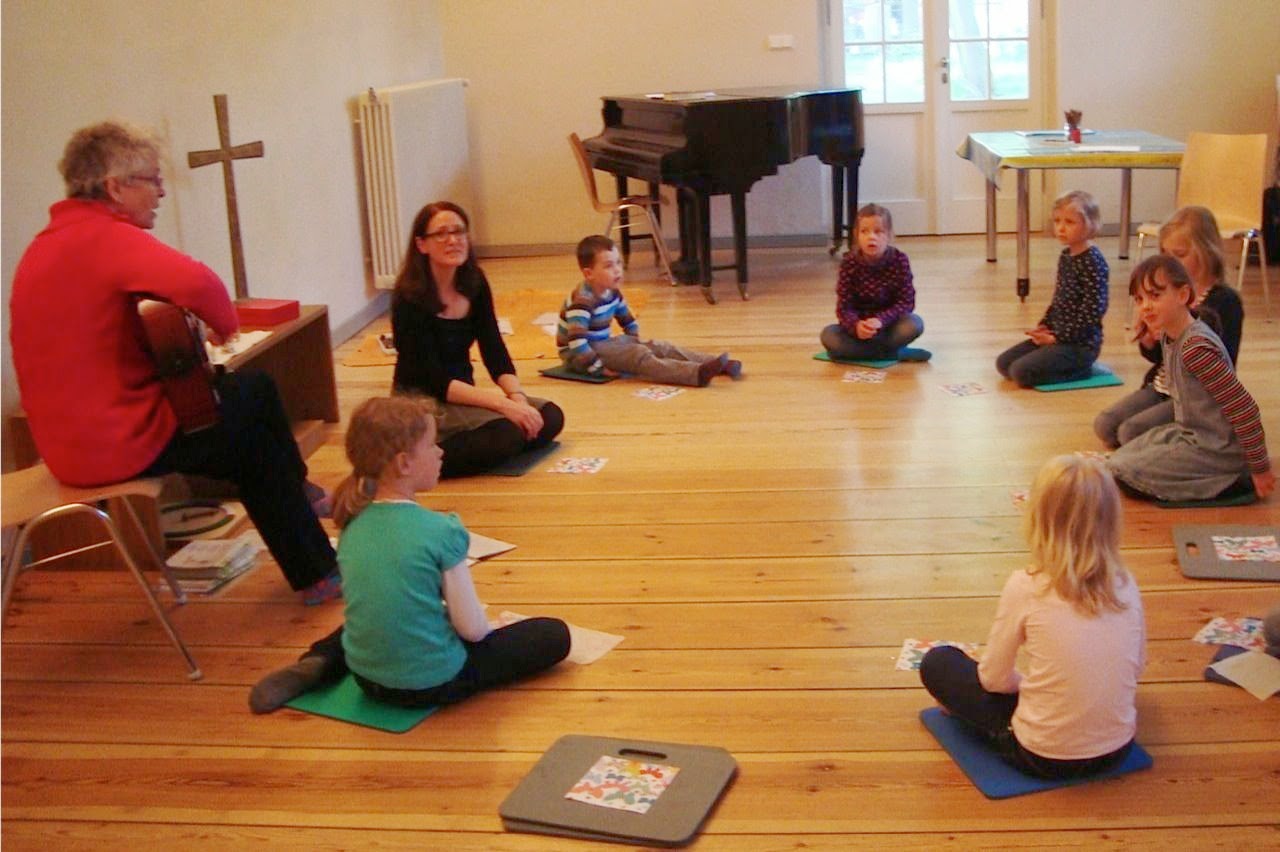This is the companion story to "John, Follower of Jesus, Teaches throughout the World". You can read about the first story here and as well as view the story materials, which are exactly the same for the companion story.
Both of these stories are about John the Apostle and his exile on the isle of Patmos. They are almost identical, except that each one deals with a different passage that John wrote from the book of Revelation.
The stories come from Young Children & Worship, another Montessori-inspired curriculum whose creator, Sonja Stewart, drew heavily upon the work of Godly Play creator, Jerome Berryman. One plus of YWC is that it has some interesting New Testament stories not contained in the Godly Play curriculum. A big minus, however, is that the stories can be too simple for children over 7 years of age.
Last year, when I told Part 1, the children complained that it was too short and a little boring. This time I carefully thought through how to elaborate to make it more interesting for older children. I started by explaining more about the geography and pointed that the part of the earth we were looking at is now modern-day Turkey and the Middle East. I also explained that Patmos had been enlarged so that we could see it better, and in reality it is quite tiny.
I also added more historical details about the city of Ephesus, how it was a center of worship for the goddess Artemis, and how many people earned their living from selling articles related to worship her temple. This helped the children to grasp the larger picture of why John's teaching about Jesus might have made people angry enough to have him arrested and sent into exile.
The story ends with the focus on a passage in Revelation about the new heaven and earth from Revelation 22 that John wrote to his friends in Ephesus while he was in exile.
The underlay that depicts Asia Minor and the Mediterranean Sea is quite lovely, and the children were drawn to the geography during the Response Time.
One child carefully copied the map and John's journey. Then, she fashioned a boat, John, and a ball and chain to represent his captivity out of modeling clay.
Sometimes, when our group is smaller, I also choose an activity during Response Time. (I find as a mentor that it is important to myself continue to wonder and create.) I chose to wonder about John's chains with modeling clay and how it would have felt to be in chains because of my faith. Then, I turned the links into a "prayer chain" and used it as a rosary of sorts to quietly pray as the children continued their work.
Both of these stories are about John the Apostle and his exile on the isle of Patmos. They are almost identical, except that each one deals with a different passage that John wrote from the book of Revelation.
The stories come from Young Children & Worship, another Montessori-inspired curriculum whose creator, Sonja Stewart, drew heavily upon the work of Godly Play creator, Jerome Berryman. One plus of YWC is that it has some interesting New Testament stories not contained in the Godly Play curriculum. A big minus, however, is that the stories can be too simple for children over 7 years of age.
Last year, when I told Part 1, the children complained that it was too short and a little boring. This time I carefully thought through how to elaborate to make it more interesting for older children. I started by explaining more about the geography and pointed that the part of the earth we were looking at is now modern-day Turkey and the Middle East. I also explained that Patmos had been enlarged so that we could see it better, and in reality it is quite tiny.
I also added more historical details about the city of Ephesus, how it was a center of worship for the goddess Artemis, and how many people earned their living from selling articles related to worship her temple. This helped the children to grasp the larger picture of why John's teaching about Jesus might have made people angry enough to have him arrested and sent into exile.
The story ends with the focus on a passage in Revelation about the new heaven and earth from Revelation 22 that John wrote to his friends in Ephesus while he was in exile.
The underlay that depicts Asia Minor and the Mediterranean Sea is quite lovely, and the children were drawn to the geography during the Response Time.
One child carefully copied the map and John's journey. Then, she fashioned a boat, John, and a ball and chain to represent his captivity out of modeling clay.
Another child re-created the entire map in miniature with modeling clay.
Sometimes, when our group is smaller, I also choose an activity during Response Time. (I find as a mentor that it is important to myself continue to wonder and create.) I chose to wonder about John's chains with modeling clay and how it would have felt to be in chains because of my faith. Then, I turned the links into a "prayer chain" and used it as a rosary of sorts to quietly pray as the children continued their work.






























